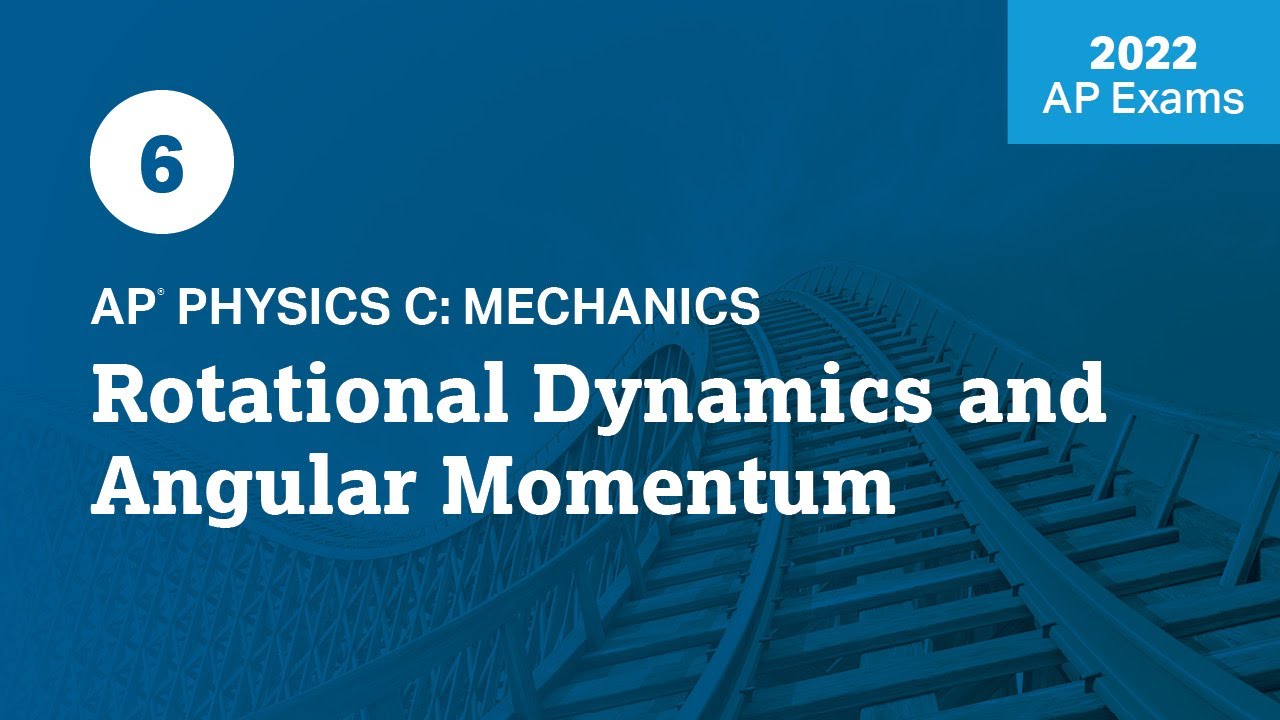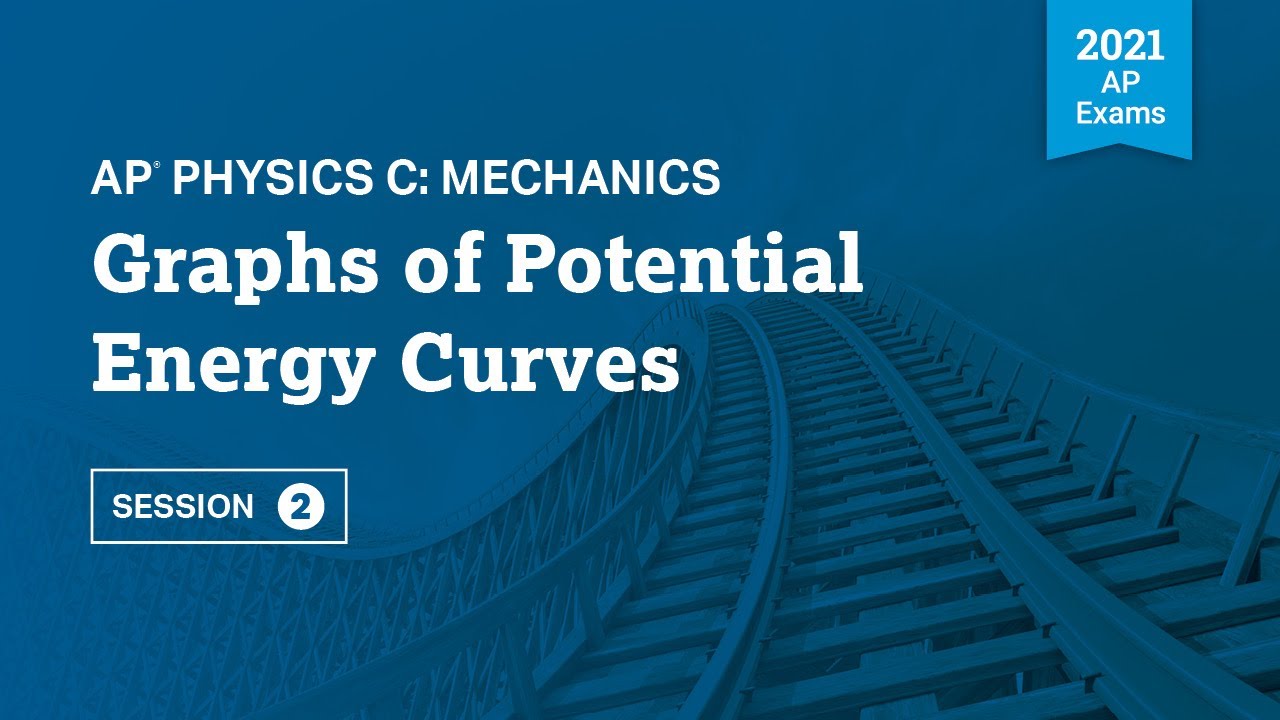7 | FRQ | Practice Sessions | AP Physics C: Mechanics
TLDRIn this AP Physics C mechanics practice session, DeeDee Messer guides students through a complex problem involving a triangular rod with non-uniform mass density and a hoop system. The session covers rotational inertia calculations, torque, angular speed, and energy conservation, emphasizing integral calculus and the importance of consistent variable usage. Messer encourages students to practice regularly for better AP exam performance.
Takeaways
- 📚 The session is an AP Physics practice focused on mechanics and rotation.
- 👩🏫 The instructor, DeeDee Messer, is an AP Physics C teacher at William Mason High School.
- 🔗 The video provides an option to download a PDF or paper copy of the question for practice.
- 📝 The practice involves a triangular rod with a non-uniform linear mass density, integral calculus, and rotational inertia.
- 🧠 Part A requires using integral calculus to show the rod's rotational inertia about its left end is 1/2 ml^2.
- 🔄 The concept of rotational inertia is reiterated with the basic equation mr^2 to validate the derived expression.
- 🛠 For Part B, the task is to derive the rotational inertia of a system consisting of a hoop and three rods attached to it.
- 🔄 Part B emphasizes the importance of adding the rotational inertia of individual components to find the total.
- 🌀 In Part C, the hoop-rod system is subjected to a constant force, and the goal is to derive the final angular speed.
- ⚙️ Part D involves drawing and labeling forces acting on the hoop-rod system as it rolls up a ramp.
- 📉 Part E requires deriving an expression for the change in height of the hoop's center using conservation of energy principles.
- 🏆 The scoring for each part is detailed, emphasizing the importance of correct equations, substitutions, and understanding of physical principles.
Q & A
What is the main topic of the video session presented by DeeDee Messer?
-The main topic of the video session is an AP physics practice focusing on mechanics, specifically dealing with a free response question involving rotation and the calculation of rotational inertia.
What is the formula for the non-uniform linear mass density lambda given in the video?
-The formula for the non-uniform linear mass density lambda is given by lambda equals 2m over l squared times x, where x is the distance from one end of the rod.
How does DeeDee Messer suggest to approach the integral calculus problem in part A of the question?
-DeeDee Messer suggests starting with the equation for rotational inertia, making a substitution using the given linear mass density lambda, and then integrating x cubed with respect to x over the bounds from 0 to capital L.
What is the calculated rotational inertia of the rod about its left end in part A?
-The calculated rotational inertia of the rod about its left end is 1/2 ml squared.
How many points is part A of the question worth, and what are the criteria for earning those points?
-Part A is worth three points. The criteria for earning those points include relating x to r in an integral for rotational inertia, correctly using the linear mass density and the correct expression, and ensuring the correct balance by integrating over the entire length of the rod.
What is the expression for the rotational inertia of the hoop-rod system about the center of the hoop in part B?
-The expression for the rotational inertia of the hoop-rod system about the center of the hoop is 5/2 ml squared.
How many points is part B of the question worth, and what is the main criteria for earning points in this part?
-Part B is worth two points. The main criteria for earning points is showing clearly that the total rotational inertia is the sum of the hoop and three rods, and ensuring the answer is consistent with the answer to part A.
What is the expression derived for the final angular speed of the hoop-rod system in part C?
-The expression derived for the final angular speed of the hoop-rod system in part C involves the variables m, l, f, delta T, and is derived using the torque equation and Newton's second law for a rotating system.
How many points is part C of the question worth, and what are the criteria for earning those points?
-Part C is worth three points. The criteria for earning those points include using a correct equation to find the angular speed, relating the lever arm to the length of the rod, and correctly substituting the rotational inertia of the system from part B.
What forces should be drawn and labeled in the free body diagram for the hoop-rod system in part D?
-The forces that should be drawn and labeled in the free body diagram for the hoop-rod system in part D are the gravitational force, the normal force, and the frictional force.
What is the justification for the direction of each force in the free body diagram in part D?
-The gravitational force is always vertically down, the normal force is always perpendicular to the surface (diagonally up into the left), and the frictional force is opposite the direction of rotation (up the ramp).
What is the expression derived for the change in height of the center of the hoop in part E, and what principle is used?
-The expression derived for the change in height of the center of the hoop in part E is based on the conservation of energy principle, starting with both translational and rotational kinetic energy and ending with gravitational potential energy.
How many points is part E of the question worth, and what are the criteria for earning those points?
-Part E is worth three points. The criteria for earning those points include using linear and rotational kinetic energy and a conservation of energy equation, understanding the substitution of linear speed as equivalent to r omega (or l omega), and correctly substituting the mass into a conservation of energy equation.
Outlines
📚 Introduction to AP Physics Mechanics Session
DeeDee Messer, an AP Physics C teacher, introduces a mechanics practice session focusing on a free response question involving rotation. She encourages students to download the question or pause the video to work through the problem. The session starts with a triangular rod problem where students must use integral calculus to find the rod's rotational inertia about its left end, given a non-uniform linear mass density. The correct answer is derived through substitution and integration, resulting in 1/2 ml squared, which is verified against the basic formula for rotational inertia.
🔍 Deriving Rotational Inertia of a Hoop-Rod System
The session continues with a problem involving a hoop and three identical rods attached to it. Students are tasked with deriving the total rotational inertia of the system about the hoop's center. The solution involves summing the rotational inertia of the hoop and the three rods, leading to an expression of 5/2 ml squared. The scoring criteria for this part are explained, emphasizing the importance of showing the addition of rotational inertias and maintaining consistency with previous answers.
🌀 Calculating Final Angular Speed with Applied Force
In the next part, the hoop-rod system, initially at rest, experiences a constant force exerted tangentially, causing it to spin. Students must derive an expression for the final angular speed of the system, using variables m, l, f, delta T, and appropriate physical constants. The solution involves understanding torque and Newton's second law for rotating systems, leading to an equation for omega. The scoring for this section is based on the correct use of equations, relating the lever arm to the rod's length, and the correct substitution of the system's rotational inertia from part B.
📐 Free Body Diagram for a Rolling System on an Incline
The session then addresses a scenario where the hoop-rod system rolls without slipping up a ramp. Students are instructed to draw and label the forces acting on the system, emphasizing the importance of not drawing force components and starting each force arrow from its point of application. The forces include gravitational force, normal force, and frictional force, each with a specific direction justified by their physical origins and the system's motion. Scoring for this part focuses on the correct identification and justification of the forces.
📉 Energy Conservation and Height Change Calculation
The final part of the session involves deriving an expression for the change in height of the hoop's center as it rolls up a ramp. With the assumption of no kinetic friction and energy conservation, the initial kinetic energy (both translational and rotational) is converted into gravitational potential energy at the end. By substituting definitions for energies and specific values, an expression for height change is obtained. The scoring criteria for this section reward the use of conservation of energy principles, correct substitution of linear speed, and accurate representation of the system's mass.
Mindmap
Keywords
💡AP Physics
💡Rotational Inertia
💡Integral Calculus
💡Linear Mass Density
💡Torque
💡Angular Speed
💡Hoop
💡Free Body Diagram
💡Conservation of Energy
💡Kinetic Energy
💡Potential Energy
Highlights
Introduction to the AP Physics daily practice session focused on mechanics with a free response question involving rotation.
Offering an option to download a PDF or follow along with the video for practice.
Explanation of a triangular rod with non-uniform linear mass density and its equation.
Demonstration of using integral calculus to calculate the rotational inertia of the rod about its left end.
Substitution of mass density into the integral for rotational inertia and simplification of the expression.
Integration from 0 to L to find the rotational inertia resulting in 1/2 ml squared.
Validation of the final answer's format against the basic equation for rotational inertia.
Scoring details for Part A of the question, emphasizing the importance of understanding the integral for rotational inertia.
Introduction of a hoop with given mass and radius, and the task to derive the rotational inertia of the hoop-rods system.
Addition of individual rotational inertias to find the total for the hoop-rods system.
Scoring criteria for Part B, focusing on clear representation and consistency with Part A's answer.
Application of a constant force tangentially to the hoop and derivation of the final angular speed of the system.
Use of torque and Newton's second law for a rotating system to find angular acceleration.
Expression for the change in height of the hoop's center using conservation of energy principles.
Derivation of the hoop-rod system's motion up a ramp with rolling without slipping conditions.
Instructions for drawing and labeling forces on a free body diagram, emphasizing distinct arrows for each force.
Justification of the direction of each force acting on the hoop-rod system on an incline.
Scoring details for Part D, highlighting the importance of correctly identifying and justifying forces.
Conclusion of the session with a summary of the points earned and encouragement for continued practice.
Transcripts
Browse More Related Video

6 | FRQ | Practice Sessions | AP Physics C: Mechanics

2022 Live Review 6 | AP Physics C: Mechanics | Rotational Dynamics and Angular Momentum

5 | MCQ | Practice Sessions | AP Physics C: Mechanics

2021 Live Review 2 | AP Physics C: Mechanics | Graphs of Potential Energy Curves

AP Physics C: Rotational Dynamics Review - 1 of 2 (Mechanics)

8 | FRQ (with Experimental or Lab-Based Component) | Practice Sessions | AP Physics C: Mechanics
5.0 / 5 (0 votes)
Thanks for rating: